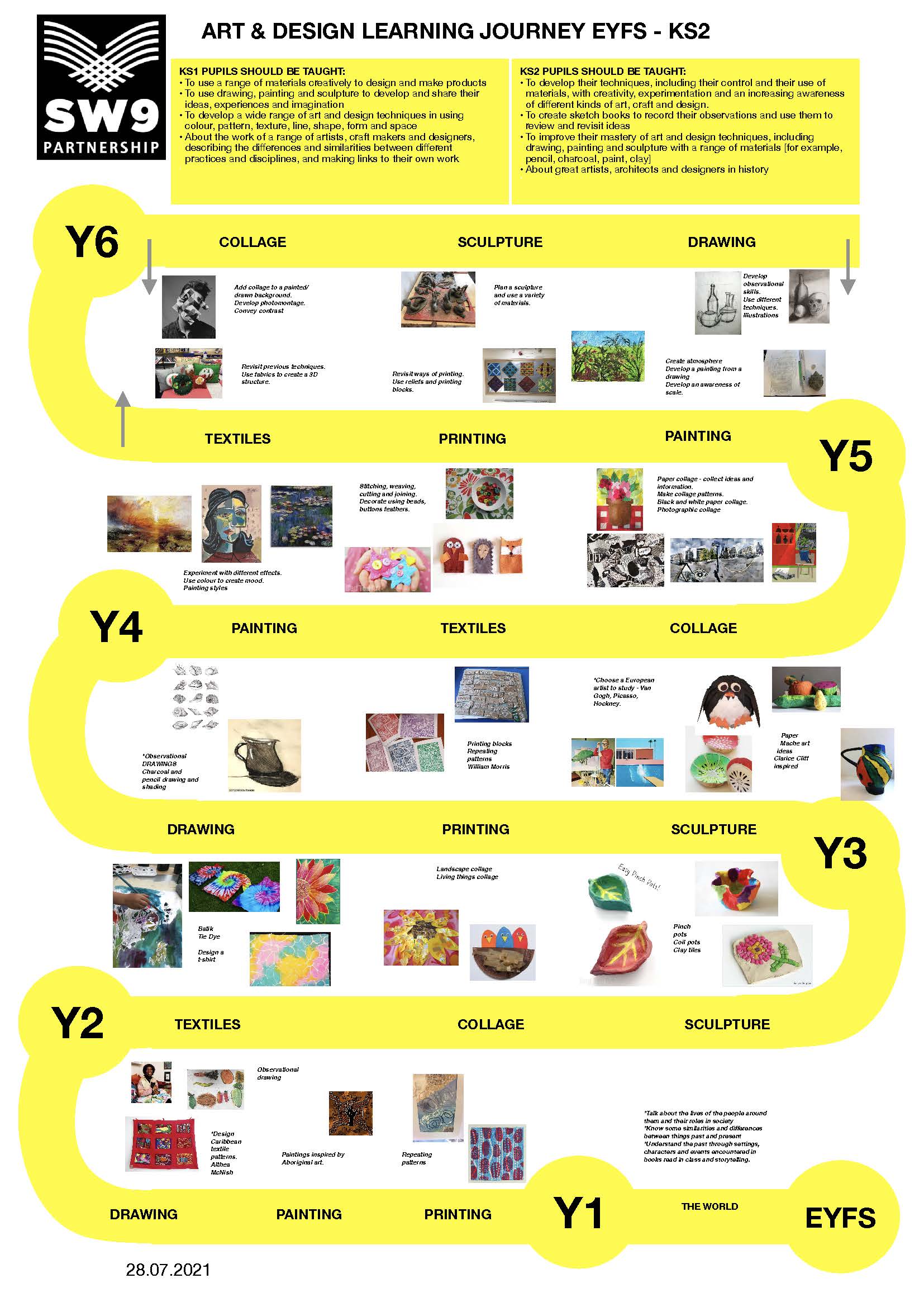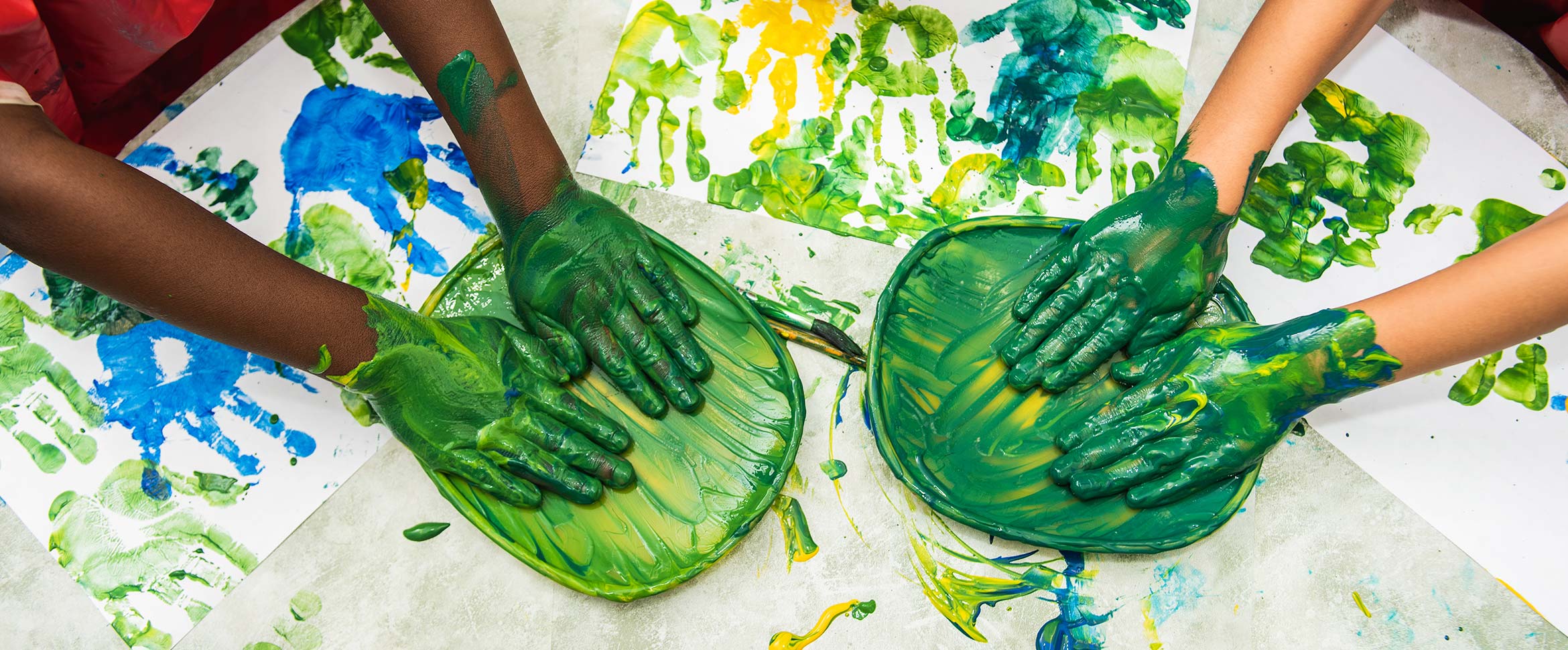Our Vision
We value the creative curriculum and believe that it can have a powerful and positive effect on children, helping them to become confident, creative learners who are able to express their individual interests, thoughts and ideas.
We believe that a high-quality art and design education should engage, inspire and challenge pupils, equipping them with the knowledge and skills to experiment, invent and create their own works of art, craft and design.
We encourage children to learn from and be inspired by the work of great artists from different cultures and understand the contribution art has made to society, both past and present.
As pupils progress, we support them to be able to think critically and develop a more rigorous understanding of art and design.

Through art work in the classroom, the children have the opportunity to develop their skills in drawing, textiles, sculpture, painting, print making and collage.
These areas are developed continuously throughout the school from the early years through to year six and the children have the opportunity to revisit skills from previous years before learning new ones.
Developing skills in drawing is given a high status and children are encouraged to draw not only in art lessons, but across the curriculum.
We encourage children to express individuality in their work and to keep their own personalised sketch books where they can explore ideas, be inventive and take risks.

Click image to enlarge
How do we plan and teach Art and Design?
At least one art project is taught per term in each class. Teachers plan sequences of lessons that will build on and develop the children’s skills culminating in a final piece.
The skills and knowledge that children will develop throughout each art topic are mapped across each year group and across the school to ensure progression.
The emphasis on knowledge ensures that children understand the context of the artwork, as well as the artists that they are learning about and being inspired by.
This enables links to other curriculum areas, with the children developing a considerable knowledge of individual artists and individual works.
Children are given opportunities to express their creative imagination, as well as practise and develop mastery in the key processes of art: drawing, painting, printing, textiles, collage and sculpture.

Whole school project work – ‘Take One Artist’ ensures that art is given high status in the curriculum and at the beginning of each academic year we choose one artist to study in depth across the federation of schools.
Trips to art galleries and exhibitions are carried out to enhance the children’s learning experiences and deepen their understanding and knowledge.
How we evaluate learning in Art and Design
The impact of our art curriculum can clearly been seen in the children’s sketchbooks which pass on with them to the following year group.
At the beginning of each unit, a detailed overview outlines the main learning objective alongside the skills that the children will build on and those which will follow.
The opportunity to evaluate and reflect on the learning is planned for towards the end of the unit to enable the children to see how their learning is progressing and where they need to take it next.
On completion of the unit of work, key assessment targets are identified and the children are able to self-assess against them.
Class teachers then use the children’s research and preparatory work, along with the final piece in order to make a judgement as to whether each child is working towards, at or above the expected level.
